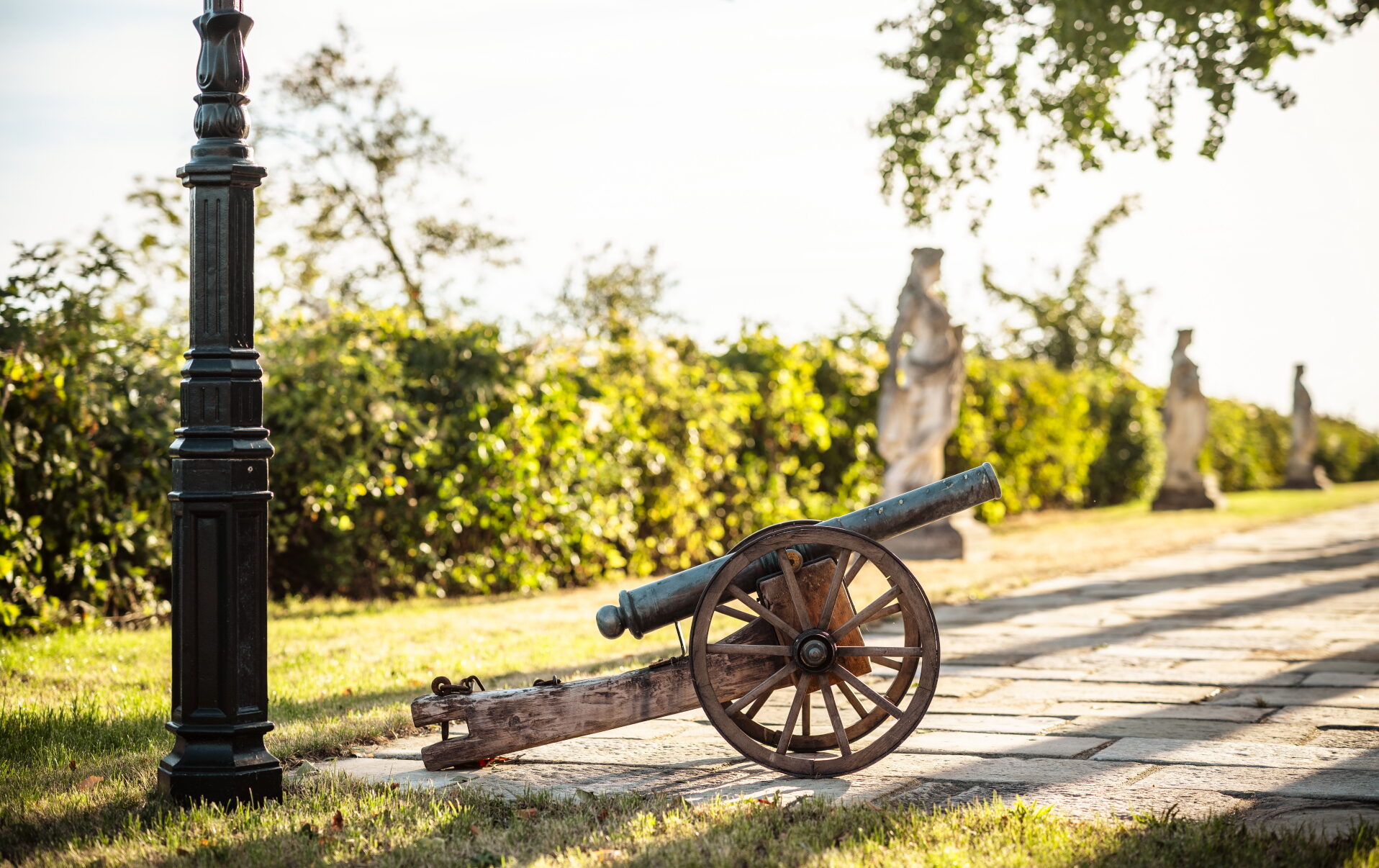


The castle complex on the Frankenberg was built around 1250, at the end of the Romantic period or at the beginning of the early Gothic period - in a phase of transition between the two architectural styles. From 1527, a Renaissance wing was built; at the beginning of the 18th century, the complex was remodelled in the Baroque style. Romanticism, Gothic, Renaissance, Baroque - Schloss Frankenberg embodies the history of building and architecture. In addition to the exquisite cuisine in the two restaurants, the ancient and lovingly restored walls of the castle are certainly one of the highlights of a visit.
Visitors can not only stroll through the beautiful grounds, but can also visit the huge vaulted cellar on request. Traces of history can be found everywhere: the original 400-year-old wooden gate at the entrance, the torch holders built into the walls, the creepy torture instruments in the dungeon. Frankenberg was once home to two castles. The older one, Hinterfrankenberg, was destroyed in 1554 during the Margrave War against the Catholic bishoprics of Würzburg and Bamberg. However, the double tower of the fortifications is still preserved as a historical highlight, as are some tombs, the castle stable, the remains of walls and a well. The castle's private cemetery is located a few metres northwest of the castle ruins, located on a terrace. Members of former ruling families are laid to rest here.
As one of the most beautiful wine castles in Franconia, Schloss Frankenberg near Weigenheim is located in a breathtaking natural landscape, right on the western edge of the Steigerwald. The region offers a gently rolling, almost Tuscan topography, beech forests, orchards dotted in between, villages and farms with old half-timbered houses and church towers jutting up into the blue sky like forefingers. In between, long rows of vines draw geometric patterns in the natural landscape.
But the tranquillity of Schloss Frankenberg also invites you to simply live the day to the full. Up here, with good wine and fine food, you can relax and unwind. In the evening, a game or two in the billiard room, a good bottle of red wine from the sister winery in South Africa - or perhaps a Scottish single malt? The others can make the more difficult decisions today.
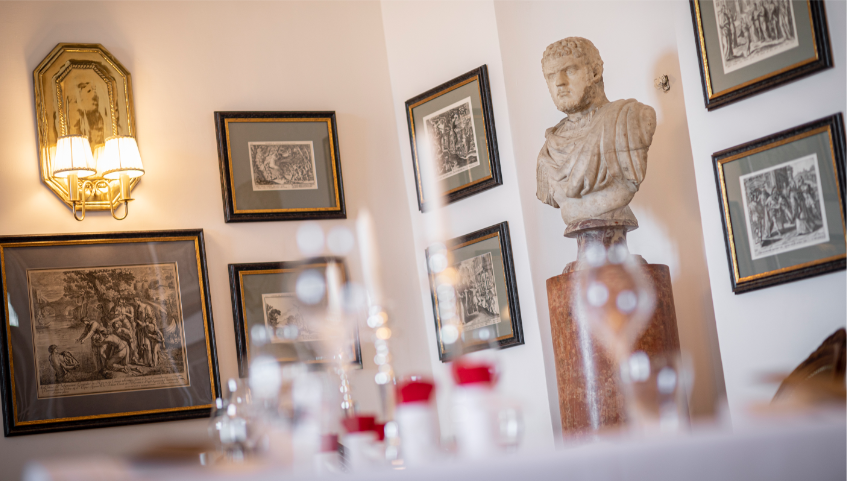
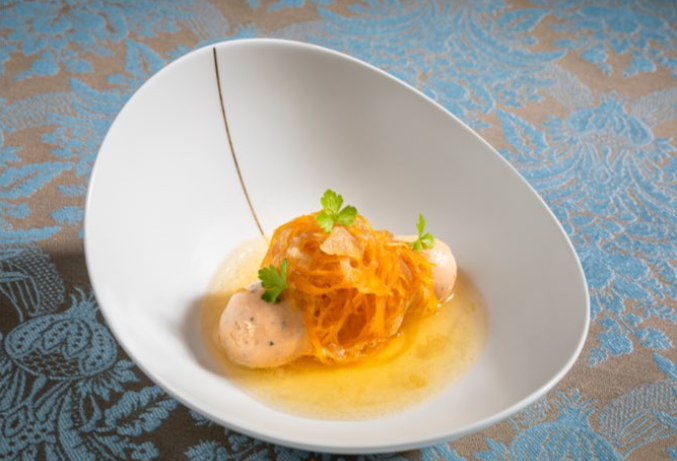
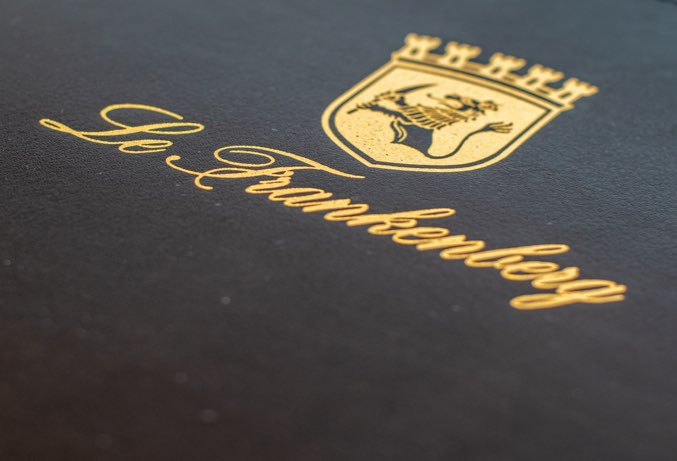
Under the management of Steffen Szabo, formerly Bavaria's youngest star chef, two restaurants have been opened at Schloss Frankenberg. The Amtshaus serves classic Franconian cuisine for locals and day trippers. The fine dining restaurant, which offers a blend of French and Franconian cuisine in the prestigious castle halls, was opened in winter 2022.
Top-class gastronomy at the highest level awaits you in our restaurants at Schloss Frankenberg. Embark on a journey through time amidst the historic castle walls and feel like royalty. Steffen Szabo has dedicated himself to French haute cuisine, but remains true to his Franconian roots and combines both styles in a modern way. Supported by a first-class team, he combines apparent opposites in his creations - tradition and modernity as well as extravagance and down-to-earthness - to create top-class culinary moments.
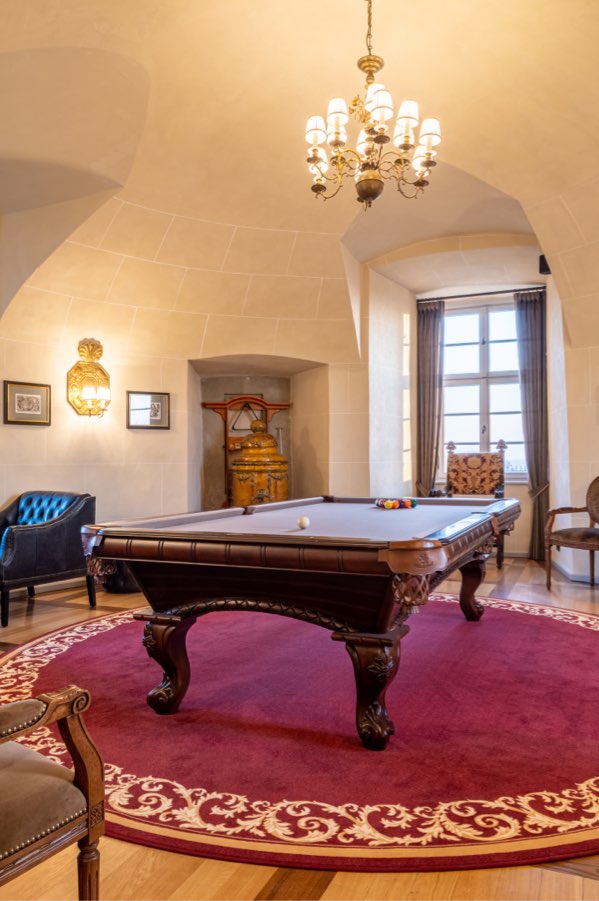
You can relax at the end of the day in our billiard room. Here you will find a well-equipped billiard table in a stately ambience. You can find the right drink for your game at the bar right next door.
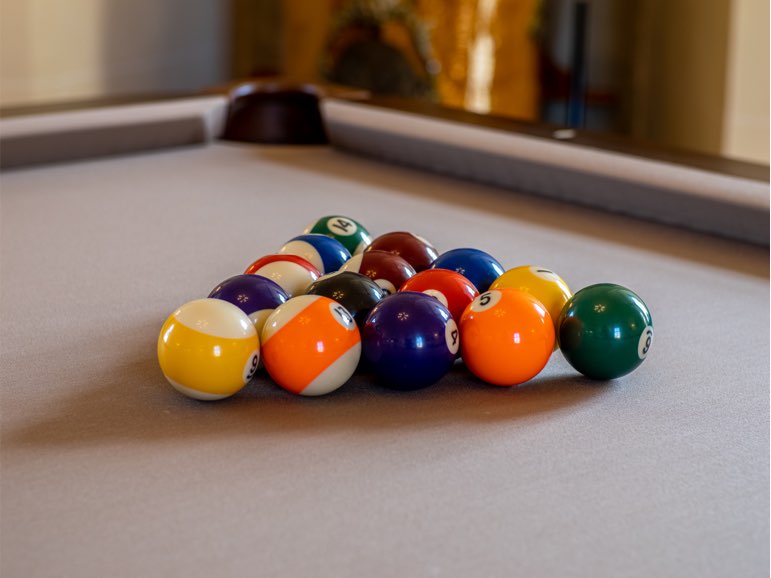
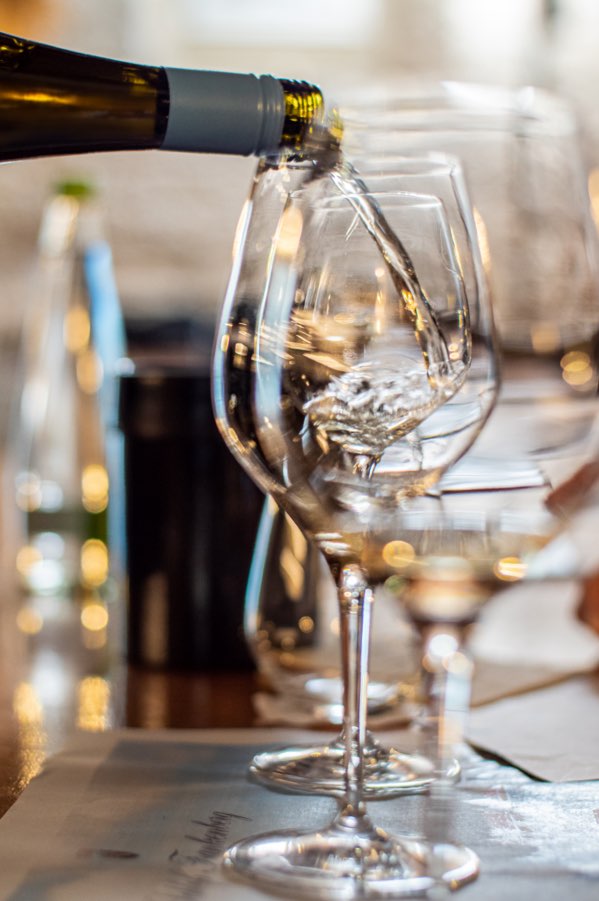
The next wine tasting will take place on 22 March 2024 from 16:45 in our historic vinotheque. Get to know our wines better and immerse yourself in the world of Schloss Frankenberg during a short guided tour.
25 € pro Person
By telephone at +490933997140
or by e-mailinfo@schloss-frankenberg.com
The dreamy ruins are secluded on the Hohenlandsberg in the middle of the forest.
The castle is one of the most unusual castle buildings in Franconia. Built in the 12th century, it was surrounded by a high enclosing wall, interspersed with defence towers and surrounded by ramparts. The castle was destroyed in the 16th century. The ramparts still exist. To get inside the castle, you have to go through a half-buried entrance of the former gatehouse. Some of the vaults and the castle cellar still exist and are used by bats as a shelter in winter.
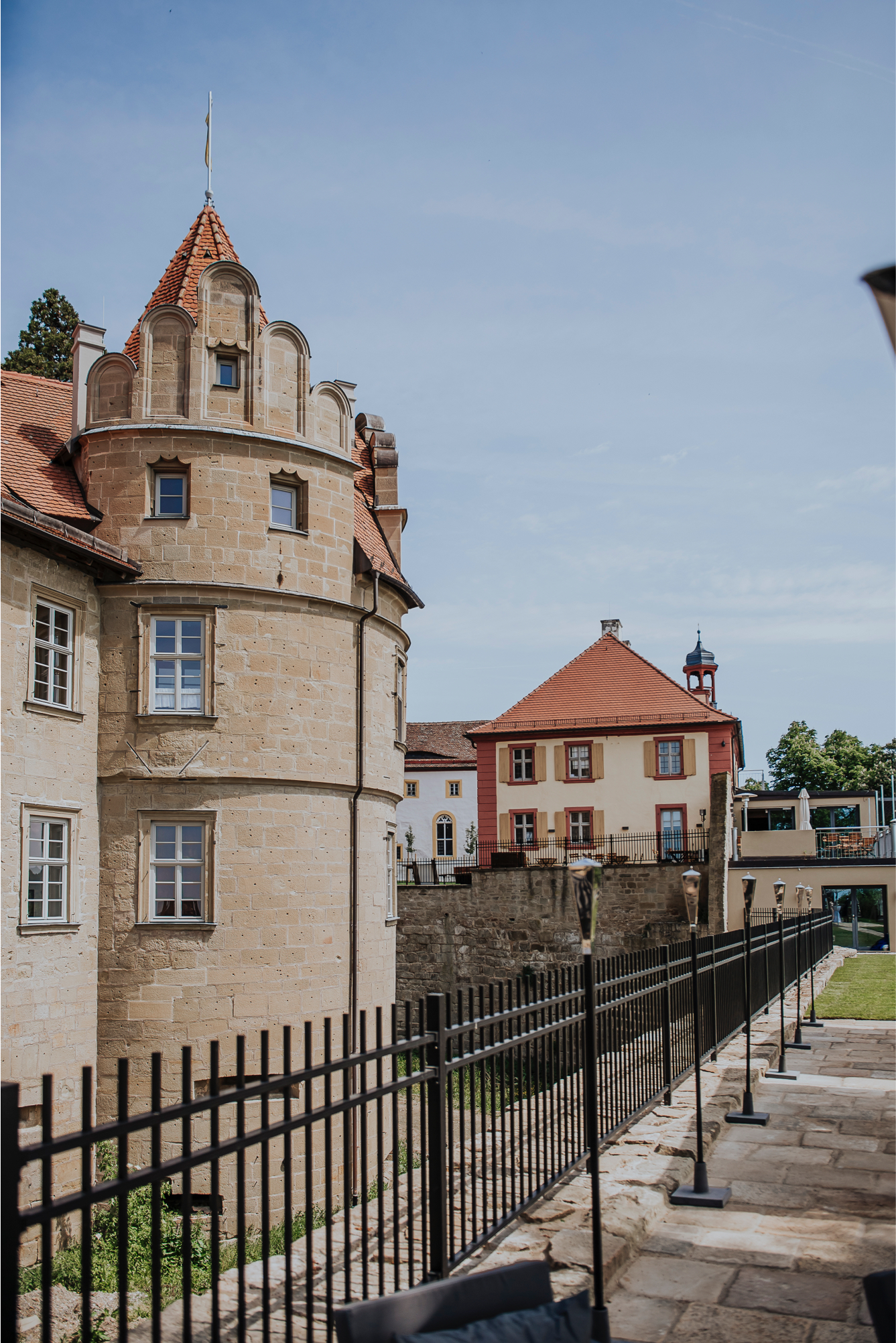
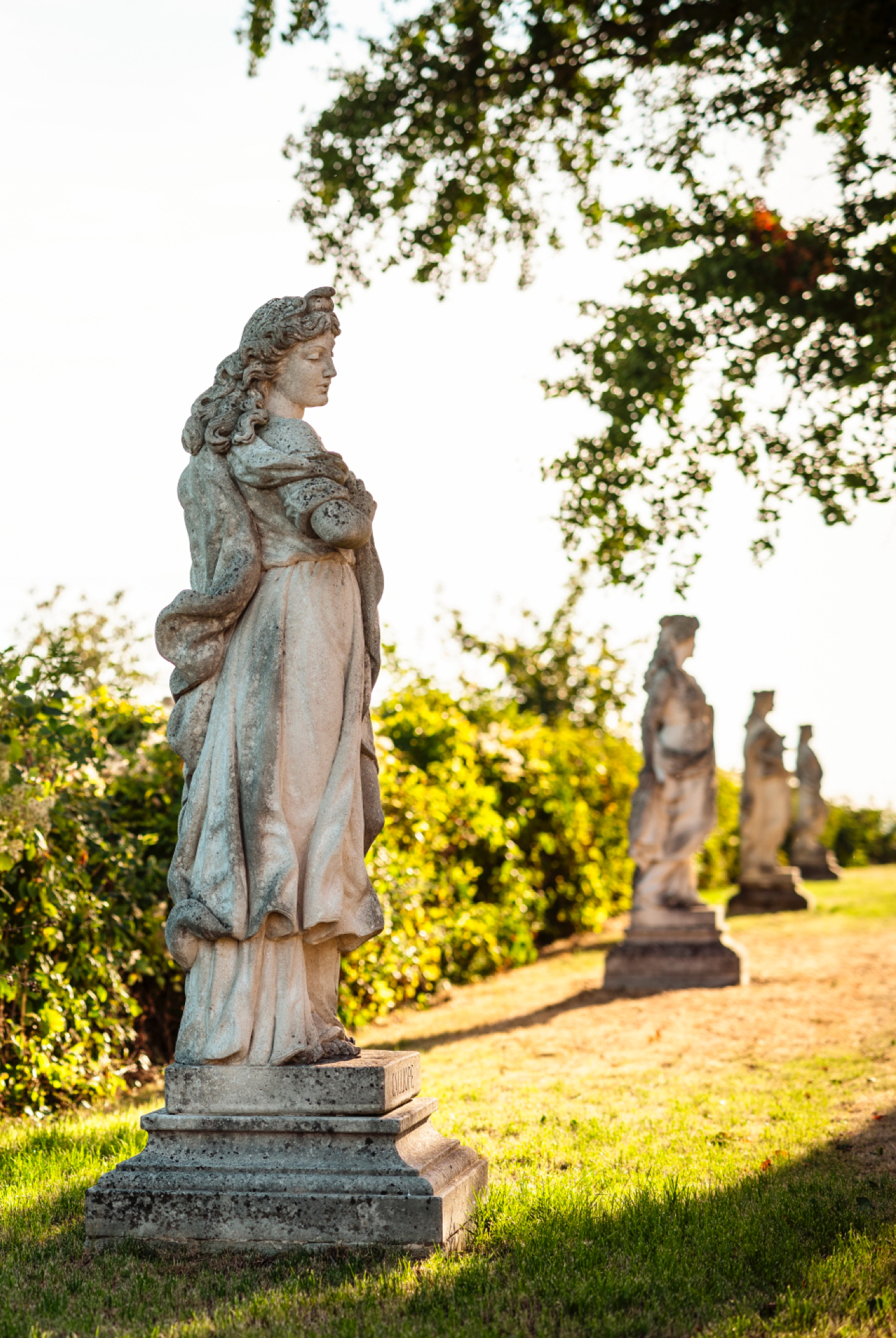
An area that is particularly suitable for hiking and cycling. The Wine Paradise Trail runs right past the castle. The Steigerwald is part of "Franconia's Mehr-Region" and is certified as a cycle-friendly district; 12 themed routes start here. Families with children can discover the beauty of nature in Bavaria's second largest deciduous forest area. Rare wild animals such as the European wildcat, otters, beavers and forest butterflies as well as 436 species of plants and fungi are at home in this forest. The biodiversity is considered outstanding. The ruins of the late Gothic Kunigunden Chapel, for example, tower high above the vineyards of nearby Bullenheim. The legendary church ruin with its benches is a place of peace and tranquillity. It is also a popular excursion destination for hikers. This is because the distant view is not just of the plain in front with the villages of Bullenheim, Ippesheim and Seinsheim, but extends far into the Rhön, to Würzburg, Rothenburg and Nuremberg. Especially if you climb the 15 metre high, wooden Bullenheim viewing tower above the treetops of the Kunigundenwald forest.
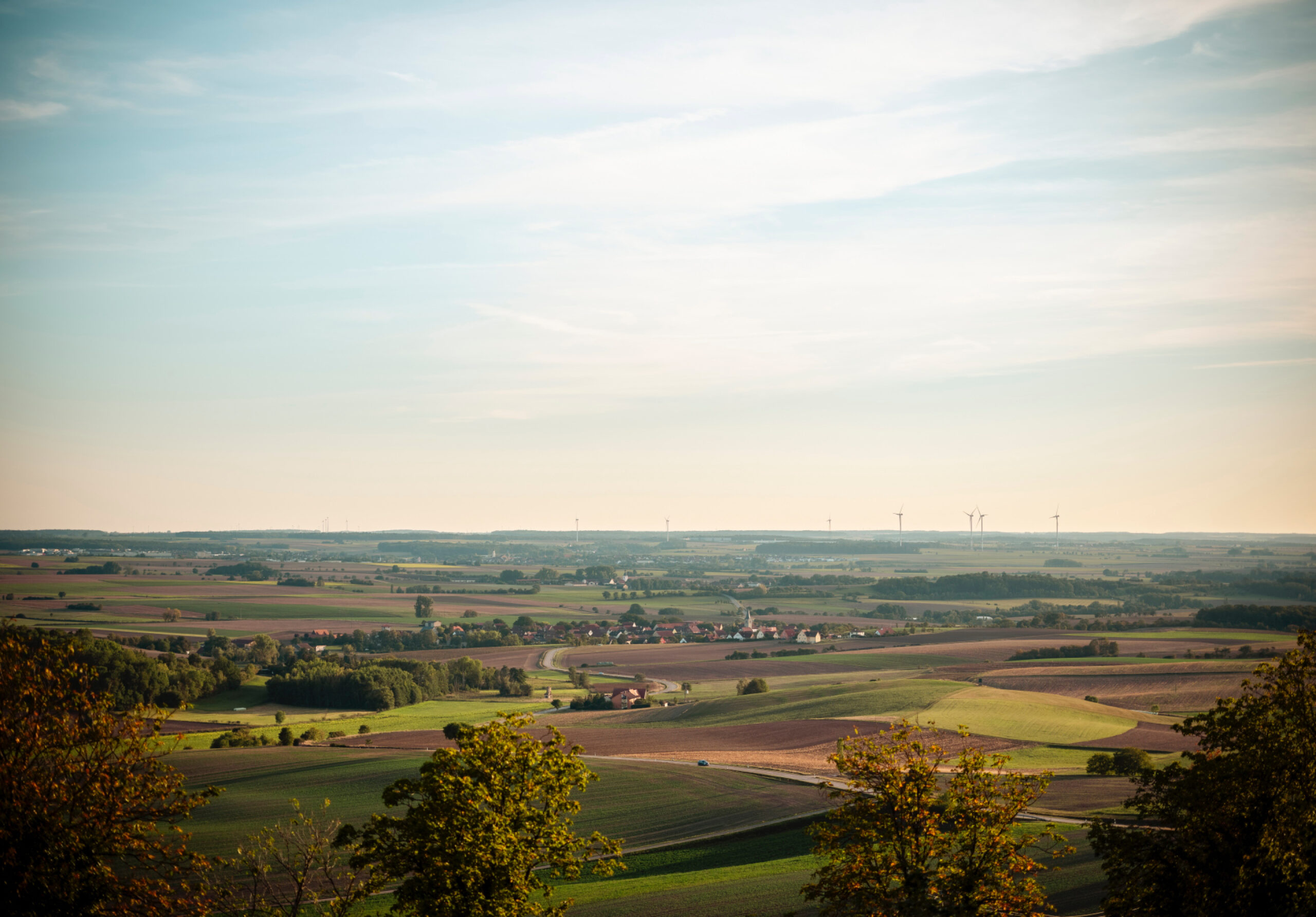
Lower Franconia has always been Catholic; the centuries-long supremacy of the prince-bishops may often have annoyed the people of Würzburg. But it has also given them a UNESCO World Heritage Site: the Residenz, designed and built by Balthasar Neumann. Completed in 1781, the magnificent baroque building with around 300 rooms is an architectural jewel that becomes a total work of art thanks to the Hofgarten and the Hofkirche. Another jewel that makes the 35-minute journey worthwhile is the university city’s wine culture. Goethe supposedly appreciated the “stone wines” from the very steep “Würzburger Stein” vineyard. Today’s Würzburgers and their visitors appreciate a different ritual: they meet for “Bridgen”. As soon as the first rays of sunshine appear, a cheerful toast is raised on the old Main bridge and the fortress on the Marienberg is marvelled at over a glass.
Rothenburg ob der Tauber in central Franconia epitomises medieval Germany with its historic old town and half-timbered romanticism. The journey from Schloss Frankenberg to “Franconian Jerusalem”, as the town with its wall with 42 towers, six gates and little doors for pedestrians was once called, takes just under 30 minutes. The “Plönlein”, which means “little square by the fountain”, is the town’s landmark. Siebersturm, Spitalviertel, the towers of the Kobolzell Gate, St James’ Church, right on the Way of St James – Rothenburg offers a lively old town for strolling and relaxing. And Rothenburg shows how people used to celebrate the festive season: in the permanent exhibition of the Käthe Wohlfahrt Christmas Museum. You can also buy the world-famous Christmas decorations there. Rothenburg is therefore also worth a visit in winter.
Bamberg stands for Upper Franconia’s history. Frankenberg’s guests drive just under 85 kilometres until the roofs of the idyllic old town appear. The narrow alleyways, picturesque half-timbered houses and historic squares are situated on seven hills. This is why Bamberg is often referred to as the “Franconian Rome”. A living museum, according to UNESCO, which declared the unique ensemble of well-preserved historical buildings from different eras a World Heritage Site. Bamberg Cathedral and the Benedictine monastery on the Michelsberg are enthroned high above the city; liquid treasures are hidden in the cellars of the old town below. Beer culture plays a prominent role in Bamberg; the city is proud of its long brewing tradition. As part of the Franconian beer region, Bamberg has a large number of breweries that are known for their unique beer varieties – in viticulture, one would probably speak of autochthonous varieties. Particularly famous is the Rauchbier, which gets its extraordinary flavour from smoking the barley over open beech fires.